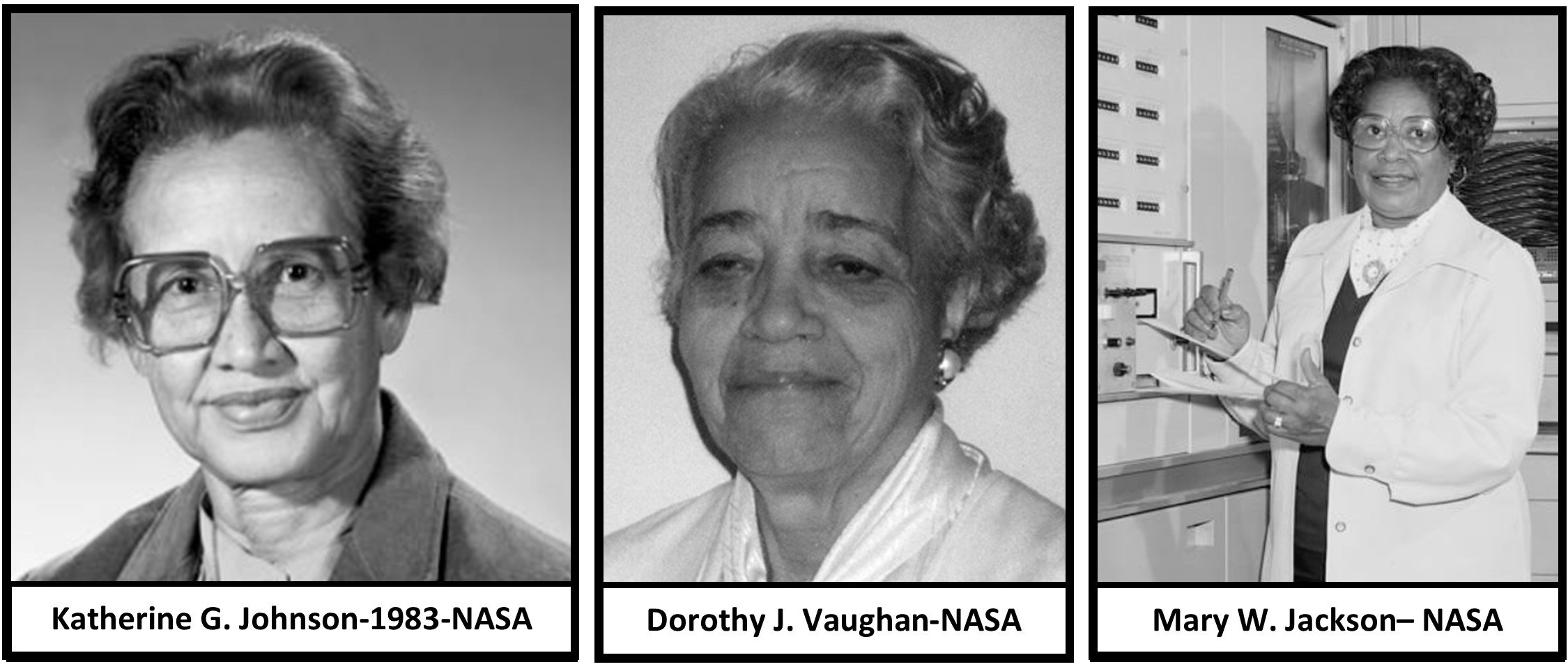(Un)Hidden Figures
Today’s Black History Month entry concerns three African-American ladies who really broke barriers at the National Aeronautics and Space Administration (NASA), no less.
NASA mathematicians Katherine Johnson, Dorothy Vaughan, and Mary Jackson actually were “Hidden Figures” for a long time. But that slighting has now ended thanks to an informative book, “Hidden Figures: The American Dream and the Untold Story of the Black Women Mathematicians Who Helped Win the Space Race,” by African-American author Margot Lee Shetterly and the popular movie that came from the book, which is simply titled “Hidden Figures.”
The three ladies have inspiring stories of overcoming prejudice against both women and minorities to become well educated and part of the massive NASA team that eventually sent men to the moon.
Getting men to the moon wasn’t easy. In fact, just getting them up and down from earth orbit presented mathematical challenges no one had ever solved. The math was complex, but Katherine Johnson was equal to the challenge and was in the very middle of the development the critical formulas and calculations that were essential to accomplishing the mission.
For sure, Johnson wasn’t just some ordinary person. She blossomed early, graduating from high school at age 14 and earning her first college degree at age 18. She was a curve breaker in other ways, too. In 1938 she was one of the first three Black students to desegregate West Virginia’s state college.
By 1953, Johnson was already working as a mathematician, or “Calculator” as they were called, for the National Advisory Committee for Aeronautics (NACA), the predecessor of NASA. That group became NASA in 1958 and, fortunately for the space program, Johnson came along to work many extremely difficult challenges to getting the math right for safe launch and especially recovery of space capsules.
And, the story about John Glenn not trusting the output of NASA’s IBM computer and wanting backup verification from Johnson is apparently true, too. It was quite a testament to Johnson’s skills.
Certainly, Johnson left her mark and today a NASA computational research facility in Hampton, Virginia is named in her honor.
Johnson wasn’t the only Hidden Figure who overcame great obstacles to make valuable contributions to space flight. Dorothy Vaughan was one of NACA's early human computer hires during World War II. In 1948, she became NACA's first black supervisor and, later, an expert FORTRAN programmer. Her expertise in the new area of electronic computer programming and in supervising others to learn these new skills would also be important to the spaceflight program.
The last of the main characters in Hidden Figures was Mary Jackson. She also was a math powerhouse. After earning dual degrees in math and physical science, she went to work at Langley in 1951 to later also be absorbed into NASA. Wanting to become a formal engineer at NASA, Jackson found herself forced to integrate what up to then had been all white night preparation courses taught at a segregated high school in Virginia. Jackson prevailed both at integration and furthering her education to become NASA’s first African-American engineer.
So, there’s our Black History Month entry for the day. Johnson, Vaughn and Jackson are inspiring ladies of color who show that African-Americans can really produce if they are just given the chance. It’s a great story, and if you are not into books, the Hidden Figures movie is often on television and is well worth your time.
Resources:

